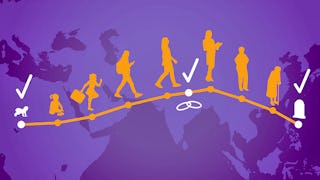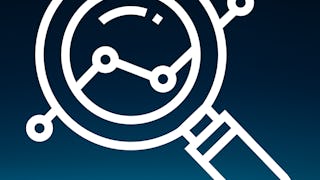En este curso, aprenderá sobre el papel y la importancia de los sistemas de registro civil y estadísticas vitales (CRVS) que se utilizan para hacer un seguimiento de los nacimientos, las defunciones y los acontecimientos vitales. Expertos de todo el mundo explicarán qué son los sistemas CRVS, cómo se utilizan, las bases jurídicas para registrar acontecimientos vitales y los retos que plantean los sistemas CRVS. Aprenderá cómo se pueden utilizar los datos de la CRVS para fundamentar la toma de decisiones a nivel poblacional, incluso en torno a métodos específicos como la certificación médica de la causa de la muerte (MCCOD) y la autopsia verbal, y la aplicación de una perspectiva de género y equidad a los sistemas de datos para garantizar que responden a las necesidades de las poblaciones. Nuestros objetivos generales para el curso son apoyar la recopilación de datos sobre defunciones y nacimientos a nivel nacional, mejorar el uso de los datos para fundamentar las prioridades políticas, seguir las tendencias y planificar las intervenciones, y mejorar el seguimiento de los principales factores de riesgo de muerte prematura, especialmente por enfermedades no transmisibles.


Registro civil y estadísticas para la salud de la población



Instructors: Smisha Agarwal
Included with
What you'll learn
Definir la importancia del CRVS y los desafíos asociados con colecionar los datos de nacimientos, muertes, y causa de muerte.
Explicar las funciones principales del CRVS así como los formatos en los que se aplican.
Considerar cómo reforzar los sistemas CRVS y mejorar la calidad de los datos, ejemplificado en las intervenciones sobre la causa de la muerte.
Utilizar enfoques de equidad y transformación de género en CRVS para garantizar que todos sean incluidos y nadie quede atrás.
Skills you'll gain
Details to know

Add to your LinkedIn profile
11 assignments
See how employees at top companies are mastering in-demand skills

There are 2 modules in this course
What's included
10 videos2 readings5 assignments2 discussion prompts
What's included
6 videos3 readings6 assignments1 discussion prompt
Offered by
Explore more from Public Health
 Status: Preview
Status: PreviewJohns Hopkins University
 Status: Free Trial
Status: Free TrialUniversity of Michigan
 Status: Free
Status: FreeJohns Hopkins University
 Status: Preview
Status: PreviewUniversiteit Leiden
Why people choose Coursera for their career





Open new doors with Coursera Plus
Unlimited access to 10,000+ world-class courses, hands-on projects, and job-ready certificate programs - all included in your subscription
Advance your career with an online degree
Earn a degree from world-class universities - 100% online
Join over 3,400 global companies that choose Coursera for Business
Upskill your employees to excel in the digital economy
Frequently asked questions
To access the course materials, assignments and to earn a Certificate, you will need to purchase the Certificate experience when you enroll in a course. You can try a Free Trial instead, or apply for Financial Aid. The course may offer 'Full Course, No Certificate' instead. This option lets you see all course materials, submit required assessments, and get a final grade. This also means that you will not be able to purchase a Certificate experience.
When you purchase a Certificate you get access to all course materials, including graded assignments. Upon completing the course, your electronic Certificate will be added to your Accomplishments page - from there, you can print your Certificate or add it to your LinkedIn profile.
Yes. In select learning programs, you can apply for financial aid or a scholarship if you can’t afford the enrollment fee. If fin aid or scholarship is available for your learning program selection, you’ll find a link to apply on the description page.

